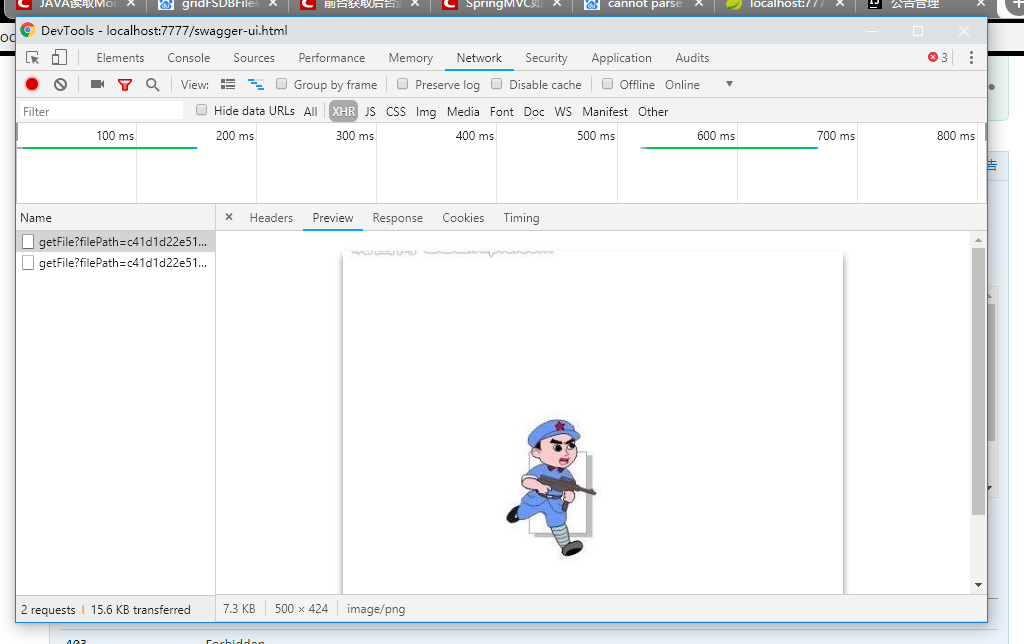可以将文章内容翻译成中文,广告屏蔽插件可能会导致该功能失效(如失效,请关闭广告屏蔽插件后再试):
问题:
I have all of my AngularJS controllers in one file, controllers.js. This file is structured as follows:
angular.module(\'myApp.controllers\', [])
.controller(\'Ctrl1\', [\'$scope\', \'$http\', function($scope, $http) {
}])
.controller(\'Ctrl2\', [\'$scope\', \'$http\', function($scope, $http) }
}])
What I\'d like to do is put Ctrl1 and Ctrl2 into separate files. I would then include both files in my index.html, but how should that be structured? I tried doing some thing like this and it throws an error in the web browser console saying it can\'t find my controllers. Any hints?
I searched StackOverflow and found this similar question - however, this syntax is using a different framework (CoffeeScript) on top of Angular, and so I haven\'t been able to follow.
AngularJS: How do I create controllers in multiple files
回答1:
File one:
angular.module(\'myApp.controllers\', []);
File two:
angular.module(\'myApp.controllers\').controller(\'Ctrl1\', [\'$scope\', \'$http\', function($scope, $http){
}]);
File three:
angular.module(\'myApp.controllers\').controller(\'Ctrl2\', [\'$scope\', \'$http\', function($scope, $http){
}]);
Include in that order. I recommend 3 files so the module declaration is on its own.
As for folder structure there are many many many opinions on the subject, but these two are pretty good
https://github.com/angular/angular-seed
http://briantford.com/blog/huuuuuge-angular-apps.html
回答2:
Using the angular.module API with an array at the end will tell angular to create a new module:
myApp.js
// It is like saying \"create a new module\"
angular.module(\'myApp.controllers\', []); // Notice the empty array at the end here
Using it without the array is actually a getter function. So to seperate your controllers, you can do:
Ctrl1.js
// It is just like saying \"get this module and create a controller\"
angular.module(\'myApp.controllers\').controller(\'Ctrlr1\', [\'$scope\', \'$http\', function($scope, $http) {}]);
Ctrl2.js
angular.module(\'myApp.controllers\').controller(\'Ctrlr2\', [\'$scope\', \'$http\', function($scope, $http) {}]);
During your javascript imports, just make sure myApp.js is after AngularJS but before any controllers / services / etc...otherwise angular won\'t be able to initialize your controllers.
回答3:
Although both answers are technically correct, I want to introduce a different syntax choice for this answer. This imho makes it easier to read what\'s going on with injection, differentiate between etc.
File One
// Create the module that deals with controllers
angular.module(\'myApp.controllers\', []);
File Two
// Here we get the module we created in file one
angular.module(\'myApp.controllers\')
// We are adding a function called Ctrl1
// to the module we got in the line above
.controller(\'Ctrl1\', Ctrl1);
// Inject my dependencies
Ctrl1.$inject = [\'$scope\', \'$http\'];
// Now create our controller function with all necessary logic
function Ctrl1($scope, $http) {
// Logic here
}
File Three
// Here we get the module we created in file one
angular.module(\'myApp.controllers\')
// We are adding a function called Ctrl2
// to the module we got in the line above
.controller(\'Ctrl2\', Ctrl2);
// Inject my dependencies
Ctrl2.$inject = [\'$scope\', \'$http\'];
// Now create our controller function with all necessary logic
function Ctrl2($scope, $http) {
// Logic here
}
回答4:
What about this solution? Modules and Controllers in Files (at the end of the page)
It works with multiple controllers, directives and so on:
app.js
var app = angular.module(\"myApp\", [\'deps\']);
myCtrl.js
app.controller(\"myCtrl\", function($scope) { ..});
html
<script src=\"app.js\"></script>
<script src=\"myCtrl.js\"></script>
<div ng-app=\"myApp\" ng-controller=\"myCtrl\">
Google has also a Best Practice Recommendations for Angular App Structure
I really like to group by context. Not all the html in one folder, but for example all files for login (html, css, app.js,controller.js and so on). So if I work on a module, all the directives are easier to find.
回答5:
For brevity, here\'s an ES2015 sample that doesn\'t rely on global variables
// controllers/example-controller.js
export const ExampleControllerName = \"ExampleController\"
export const ExampleController = ($scope) => {
// something...
}
// controllers/another-controller.js
export const AnotherControllerName = \"AnotherController\"
export const AnotherController = ($scope) => {
// functionality...
}
// app.js
import angular from \"angular\";
import {
ExampleControllerName,
ExampleController
} = \"./controllers/example-controller\";
import {
AnotherControllerName,
AnotherController
} = \"./controllers/another-controller\";
angular.module(\"myApp\", [/* deps */])
.controller(ExampleControllerName, ExampleController)
.controller(AnotherControllerName, AnotherController)
回答6:
Not so graceful, but the very much simple in implementation solution - using global variable.
In the \"first\" file:
window.myApp = angular.module(\"myApp\", [])
....
in the \"second\" , \"third\", etc:
myApp.controller(\'MyController\', function($scope) {
....
});



